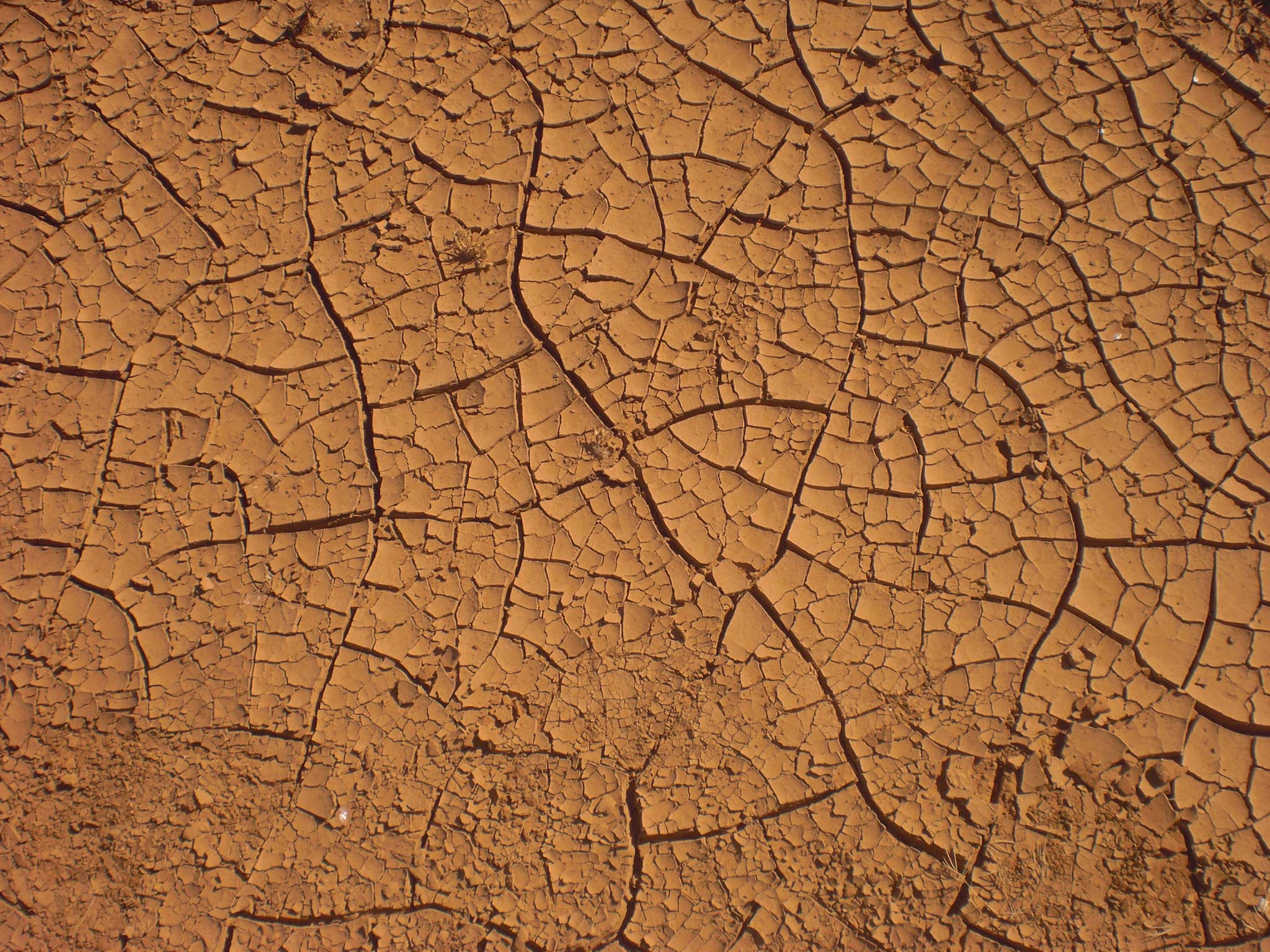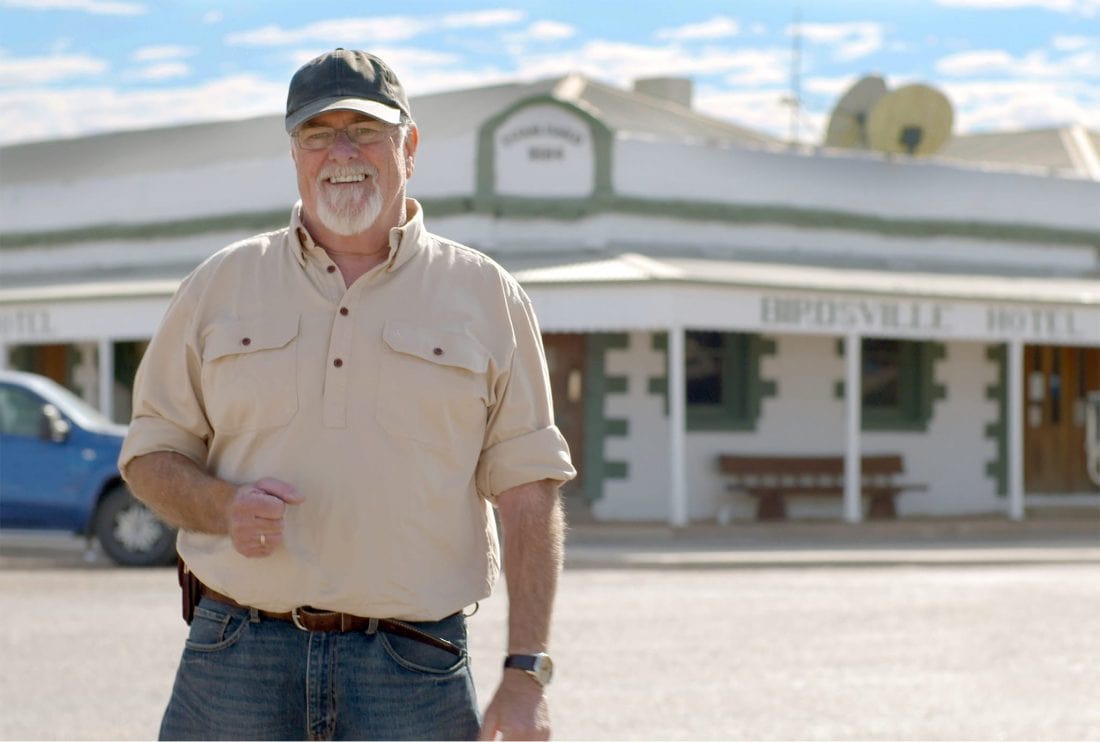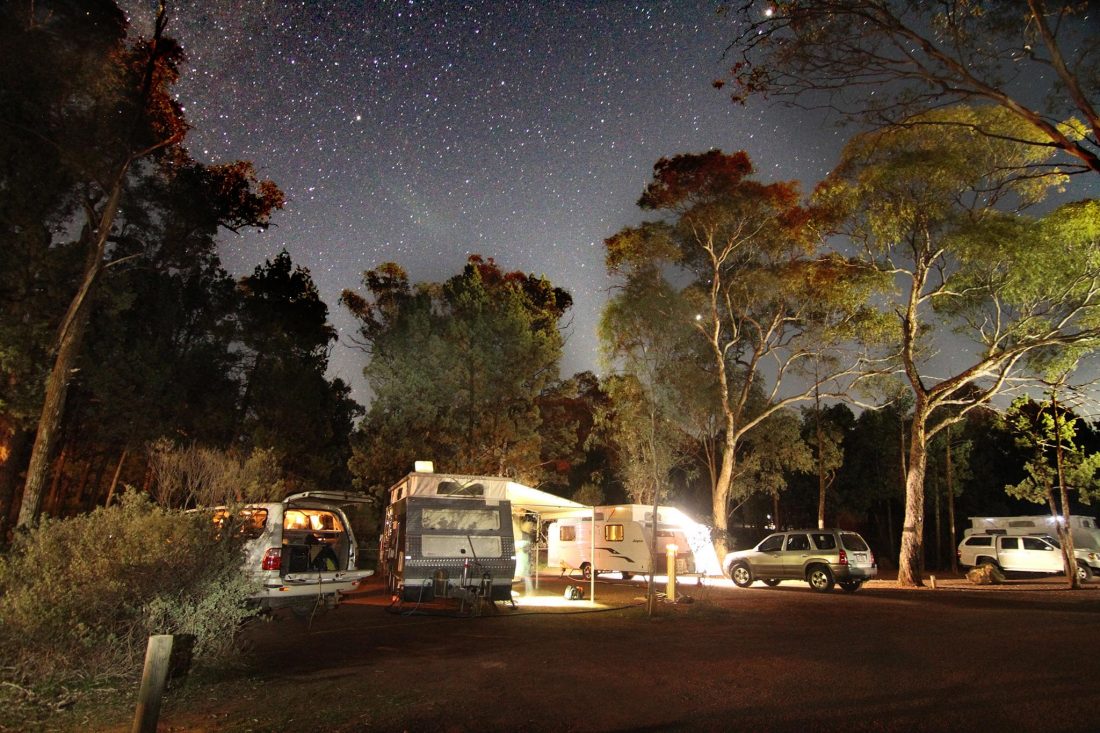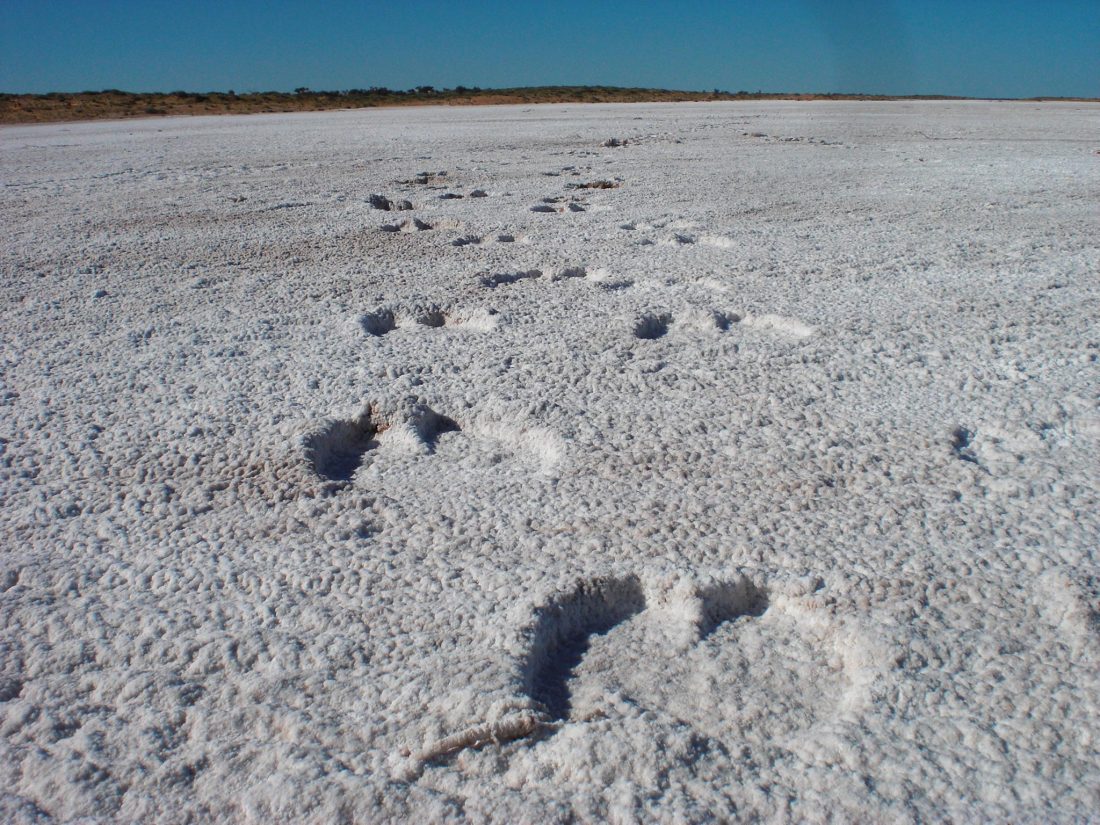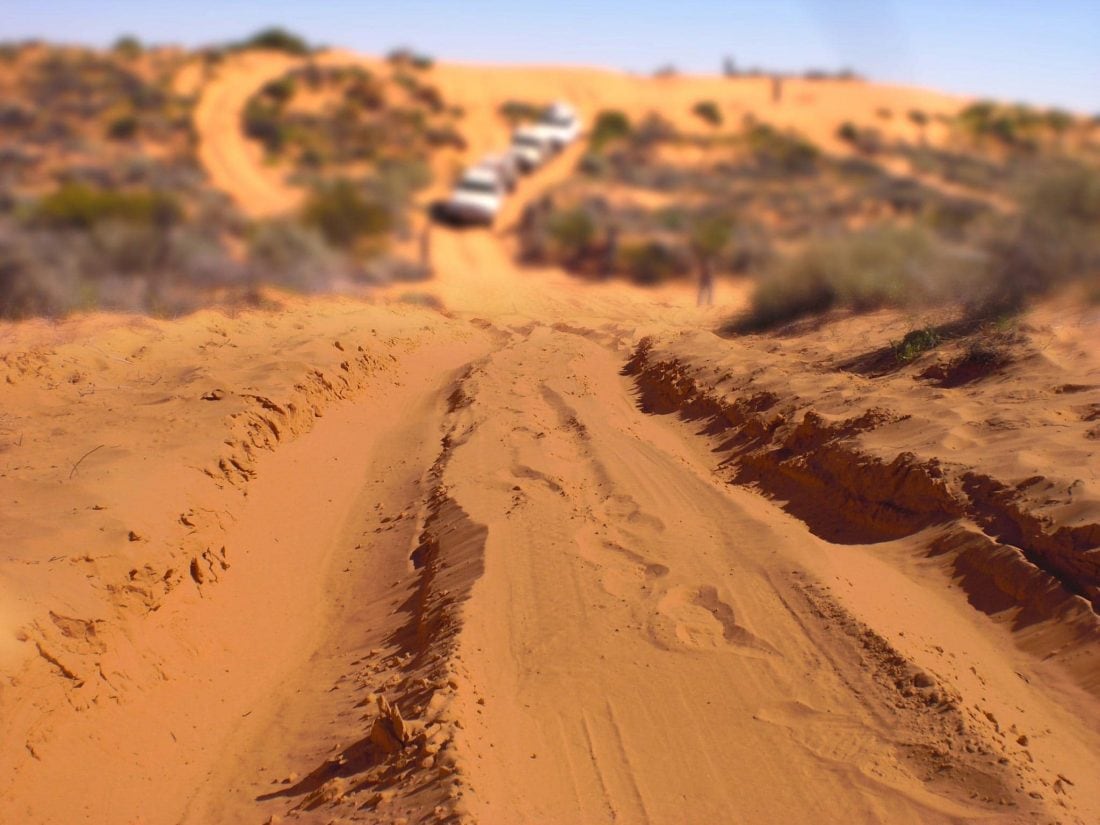What started as just another job, becomes a passion for discovering Australia
Cameraman, editor, film producer, director…there’s not much Andrew Kennedy hasn’t done in his remarkable 40-year career as part of Adelaide’s film and television industry. TV ads, corporate videos, short films, documentaries, and more, Andrew has shot all over Australia for a diverse range of clients.
Andrew and his wife Pat are also intrepid caravanners and camping enthusiasts with a passion for discovering all that Australia offers. They have created ’Australia On Track’ — a business dedicated to providing podcasts, blogs, videos, helpful hints, and information for those who tow and 4WDers.
Andrew is also in demand as an MC and facilitator at Caravan and Camping shows where he hosts Q&A sessions with special guests on all things outdoors.
The Outback Loop caught up with Andrew to ask him about his passion for the outback and getting out to see as much of Australia as possible.
Driving on Outback Tracks
Interviewer: So, Andrew, what lures you to the Outback?
Well, most of my travel to the Outback has been work-related. So being in the film and TV industry, we get to go to places. We drive, we shoot them, and we don’t, believe it or not, we don’t actually see them. We don’t sit and linger and look at things. So my first experience with The Outback Loop® would have been twenty plus years ago when I went with the Variety Club Bash. And we ended up in Birdsville, but we travelled sections.
Now bear in mind the Variety Club Bash they’re not four-wheel drives. Some of them are, but they’re [mainly] two wheel drives that need a bit of work and have been had things done to them. So because of that, a lot of the cars made it, most of them did, but a lot didn’t. The thing with the roads here…they change. You can have a big downpour, and the road wouldn’t get washed away, but there would be potholes in it.
Interviewer: Yeah.
Three weeks later the sun comes out in a big way, and it starts to crack. So it affects the way you drive affects what you’re doing and how you go.
Interviewer: Is it on the main tracks?
Yeah, pretty much.
When you go into outback where the Birdsville and the Strzelecki tracks meet there’s a sign that tells you the road conditions, and it’s got a phone number there. So you can ring the phone number, but it’s very evident which roads are closed. So if there’s a big downpour or if there’s a problem they can shut them, and that’ll advise punters that they’re doing it.
Interviewer: Yeah.
They will advise you and it would also pay to go into local cop shop, I guess, and have a chat with them and see what’s going on out there because there are quite often road works as well.
The Night Sky in William Creek
Interviewer: Right.
Bear in mind you also have to share the road. The roads that you’re on. Trucks go on those roads, and they’ve pretty much got the right of way if it’s a big road train. You’ve got to give it up for them.
So I suppose I’ve gone off subject, if that’s all right, but what lured me to the outback? We’ve always had tents, and tent trailers, and caravans and we’ve been to the Flinders many times.
But the experience that really got me was one Easter that we wanted to go Coober Pedy with another couple and we went along…I’m going to point to the map, sorry. We were down in the Flinders Ranges National Park. We went up to Blinman; there’s a track across to the main road. We went up to Lyndhurst and then up to Marree which was a good bit of dirt and stuff, and then across the Oodnadatta Track to William Creek where there was an area that we pulled over.
It was about 4:30-5:00 at night. We pulled over and we had tent trailers, and we opened them up and left them hitched on the cars. We pulled out our three-legged gas barbie, threw a few snags on, popped a bottle of red, sat down and we’re chatting just like I am to you now. And all of a sudden, all of us, the four of us stop talking.
It had become dark, but it hadn’t. You looked up and we were experiencing the most amazing light show. Straight away, just looking up you could reach up and touch those stars. You could see shooting stars that were so close, and it wasn’t like oh one, and then an hour later you might see another, there were masses of them, there were satellites, there were planes in the distance.
Interviewer: Wow, really.
But the light show was the most amazing because it was in the middle of nowhere. It was just awesome. Now we’ve experienced great stars in the Flinders Ranges and other places, but nothing like this. It was a turning point for me and Pat, my wife. We were hooked, and that’s why I want to go back again and again and again. We love it.
Many Ways Lead to the Outback Loop
Interviewer: Apart from coming in from the Flinders, you’ve also, for work, come in from the other way.
Correct. As part of my job as a cameraman and editor, I was doing a job we were re-enacting the first crossing by short wheelbase Nissan Patrol going across the Simpson Desert. So I went up, I flew up to Queensland, to Brisbane, went across to Longreach and then down through Boulia into Birdsville.
It was great, but to me coming up through South Australia the roads were corrugated, and dirt, but that to me adds to the experience. I’ve also crossed the Simpson Desert with this job. Actually, the job I just told you about, sorry, that was the Big Red Bash, but I have come across and come from Alice Springs down to Mount Dare and then across the Simpson to Poeppel Corner and into Birdsville.
That’s an experience that people have to go on. I wouldn’t take the caravan on there. Definitely not. We had a couple of trailers, and we had in our convoy, we had probably half a dozen vehicles, plus catering of course. We had those vehicles and the old Nissan Patrol that was awesome that went across. It was re-enacting a journey by Reg Sprigg, and his then-wife, his wife has passed away, Griselda, and son and daughter Doug and Marg.
They were little tackers, and they went across on the bench seat in the front of the Patrol across the Simpson, and in those days the French Line wasn’t there. The French Line is a track. It’s the road that goes across, and it wasn’t there, so they were going over the dunes into the spinifex, tyres going bang, bang, bang, bang. It had a bit of support as well, had some support vehicles, but this was their vehicle… the Patrol.
Part of Reg’s story is that he was doing this for a petroleum company and what he found there was incredible. He had an amazing — as his son Doug does as well — an amazing ability to look at stars and go that’s that, and that’s that, and that’s south, and that’s north, and he could almost pinpoint a point precisely just by the stars it’s the way he was. Really amazing.
Interviewer: He’s a bit of an identity in the Flinders isn’t he?
So Reg created Arkaroola and Doug and Marg, I believe, I haven’t seen or spoken to them for probably a couple years now, but I think they’re still running it as a family concern. They’re bringing back Yellow Tail Rock Wallabies, and they’re nurturing those back. Doug has stargazing nights and things like that, so it’s quite an experience to go up.
When you talk to the man, he’s a walking talking encyclopaedia, a really lovely bloke. He runs everywhere in Arkaroola, I’m led to believe. He will tell you anything. We we’re in Dalhousie Springs, and the water was just coming up around us, and he’d say now do you know why this happens. It was almost like Julius Sumner Miller talking, ’Why is it so?’ sort of thing. He would explain to us why that happens, and then he’d gaze up and tell us about the stars and the constellations up there. It was awesome.
The Simpson Desert
Interviewer: Let’s talk about the Simpson.
The Simpson Desert itself is a unique stretch to travel. As I said, you wouldn’t take a caravan in there, but you’d take a trailer maybe, but best to go just with your rig and a few swags and a tent. Oh, and a flag. You have to have a flag.
Interviewer: Coming up over the dunes?
Coming up over the dunes and you have to have a good radio. Definitely a good radio. Just to let people know. Particularly if you’re in convoy, [so that you can tell them] which way you’re travelling. So you would always say that if you spot a convoy coming, you’d say, “Vehicle travelling west to east along the track and one, two, three, four vehicles in tow,” so they know what’s going on.
It was funny when we eventually got into Birdsville we went into the service station there, and they had the flags for sale, and it had ’I’ve crossed the Simpson Desert’ or the Simpson Desert something or other. You can just buy them. You don’t have to actually cross it, you can just go in and buy one, so it’s a bit of a furphy really. But you need to [buy one] for safety reasons.
Going over the sand dunes, they’re massive, and particularly, of course, when you get to Big Red at the end of the trip just before you go into Birdsville. You’ve got sand dunes, and then all the sudden in front of you is this salt lake or salt pan and just glistening, and there might be camel tracks on there or other tracks.
You think of a word to describe Australia, and I quite often use just the word ’untouched’. It’s untouched. No one has walked there before. Ancestors have, and indigenous communities have trekked it more than what we have, and they know it more than what we do, but this land is amazing, and most people would stick to the main route going through the French Line, but others would take off even though it’s not advised. Take off as well as going on their own merry way.
Interviewer: And it’s not just full of sand is it? The desert is actually quite alive out there.
Oh yes! On our trip, we didn’t see a lot of wildlife. We saw maybe two camels. We saw a few dingos and, surprisingly, we’ve seen more kangaroos in the Flinders Ranges than we would’ve out there. Oh yeah, plant life. Beautiful little plants. Not obviously small. Not big trees or nothing there booming.
But it depends on the time of the year, and please don’t ask me what time of the year it was that we went because I can’t remember right now. It depends on the time of the year, the rain that they’ve had and the weather that they’ve had in the area as to what’s growing I would imagine. A few flies and mozzies around as well.
Although one night, as I said I was working, and so the crew would film during the day, hand me the footage and I’d sit at night while they’d sleep ready for the next day. I’d sit at night with my laptop in the front of the Patrol and edit because at the end of this trip we were going to show on a big screen, a short ten-minute cut of where we had been. This was eventually cut into a one hour TV show.
It was a little ten-minute video to be shown at Birdsville. So I would be sitting there, and then all of a sudden, I looked over to my left at my swag when I was eventually going to get in there, and I noticed these little rodents. Not rats, not kangaroos, not wallabies, I can only describe them as a Quokka from Western Australia-sized type of animal.
They’re jumping in and out of my swag, and I’m going what the heck. What’s going on? I realised that because I wasn’t sure what sort of food we were going to eat, I took up some packet soup, and I thought where am I going to store it? I know I’ll just wrap it up at the top end of my swag. So these little buggers were jumping in, and they must’ve sensed it somehow.
I’ve got no idea and were opening up the soup. So I had pea and ham powdered soup all over my sleeping bag and my swag. Naturally, I flicked them out and zipped it all up and slept a couple nights in the front of the patrol. I didn’t bother sleeping in the swag after that for a while. Then, we eventually got to Birdsville, and we were okay.
It’s unique, it’s untouched, it’s incredible. There are so many words that you can use to describe the area. Everyone will have a different opinion on it. Just be prepared to be amazed. That’s the thing. Be prepared for an experience. That’s something that you’ve got to do, but you’ve got to be prepared to rough it as well. There are no facilities out there: you’re taking your own stuff with you.
The Simpson Desert crossing isn’t a great distance, but you don’t go fast. You take your time, and there are obstacles.
And it’s sand, so you’ve got to be prepared maybe to get bogged. So you’re going to have all the precautions there. You would never attempt it by yourself. Always make sure there are at least one or two other vehicles with you. One of you might have the snatch strap or the wench or the boards to help you get out of things, and then someone else might have one of the others. So you do it like that if you haven’t got everything on board. It’s a good way and probably economical way of everyone sharing the load.
So you take your time. We had I think two bogs in the whole time and that was one guy that was towing the truck trailer. He went across, and he was a journo from some newspaper that was with us. I don’t think he had had a lot of experience, and he got them both bogged, but Pat Callinan who was with us, he’s a TV 4WD guy, he jumped in and got it out straight away. It’s a bit of experience.
It might pay if you’re heading out this way to do a course. Do a 4WD course more than a towing course. Learn what you need to do, and there are plenty of those courses around. Follow Me 4WD, they’re good guys that can teach you how to drive and tackle these places properly.
I would suggest if you are hitting the dirt a lot, take spare tyres. Take an extra spare, don’t just go with the one. Maybe one of the other vehicles might have the same sort of tyres and wheels so you can swap around because believe me, if you need to be rescued off the Simpson Desert, off that track, I think it’s almost a house mortgage…well, not quite that much, but it’s a bit of money.
The recovery vehicle in at Birdsville is massive. I think its almost an Army truck trying to get you in and out. Good on the guy for having it there because I’m sure a lot of people would’ve been caught over the years. But it’s not a cheap exercise to get yourself towed out of there, and I don’t know whether the roadside assistance places would cover you for that anyway. Also, make sure you’re insured when you’re driving these tracks. Make sure your car is insured to go on the tracks. Don’t just assume that it is.
Birdsville – an Outback Loop Favourite
Interviewer: Just finishing up now…favourite spot?
Favourite spot…probably too many to describe. Each of them has their attraction, but Birdsville for a start. The iconic Birdsville pub and the iconic Birdsville Bakery…the curried camel pie. Oh my gosh. Awesome. Been through a few owners of late, but it’s fantastic.
Birdsville itself just has an air about it. Standing at the bar having a chat with the locals and just being there. Standing out the veranda looking across to where the plane lands, or at the strip, you know? Awesome. Realising that the Diamantina River runs right near there, and just in the back of the caravan park is water. Once again, [depending on] the time of the year, I’m assuming.
Interviewer: And there’s the lagoon.
The lagoon yeah. You don’t think about this. Its bird life is unbelievable, that’s actually a thing seeing bird life out on these tracks. Really good. I’ve been to Birdsville about half a dozen times now. I quite like Birdsville. Arkaroola, that’s unique as I said as well. We drove in drove out, but it was enough to see the area. Beautiful 4WD tracks that go up. You can see things in the distance.
Big Red, just out of Birdsville at the end of the Simpson Desert…the big sand dune. Just a drive up there. They’ve got the one that I would take the little one going up. Then they’ve got another one and another three tracks that go up. When you get to the top of that, and you look back over the plain that you’ve just driven over…what an experience.
Then there’s the girl from the service station. She’s got a souped-up Volkswagen with extra suspension that most people don’t know about. She’ll come around and everyone’s going yeah, right, sure. And off she goes and up the hard one and it’s just built to do it you know? So she gets up no problem. I think it’s her little party trick. A bit of fun.
Mate, there’s so many [favourite places]. The ruins that you see, just the places, the stars. I guess it’s a world of favourite places for me. When you go out there, there’s not just one defining location.
Interviewer: Definitely recommend then?
Yeah, but be prepared. Recommend to go, but if you’re not experienced or you don’t feel that you’re experienced, go with somebody that is. Make sure you’ve got mechanical backup and yeah I’d recommend it. We’ll be going back for sure.
Interviewer: Terrific, thanks very much, Andrew. Sounds fantastic.
